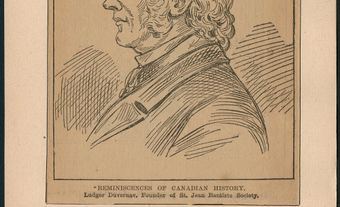This article was originally published in Maclean's Magazine on March 21, 2005
New Commuter Dailies Looking for Readers
RIGHT NOW, in a custom-designed, purple-and-lime-green office in north Toronto, a gaggle of twentysomething journalists and marketing prodigies are preparing to unleash what they're calling a "revolution in Canadian media." That "revolution" is Dose, CanWest Global's new free daily magazine, aimed at a hip, young readership, and the hype surrounding it is palpable. Dose's headquarters - an oasis of colour within the overwhelming beigeness of the National Post building - has the feeling of self-conscious exuberance of your typical dot-com start-up circa 1999. Music plays in the background. Corkboards cover the walls, should staff members feel compelled to pin up their ideas for public perusal. The marketing director, wizened at 29, is chomping conspicuously on Raisin Bran straight from the box. The only things missing, it seems, are a foosball table and a live-large-on-stock-options business plan.
In the last decade, free dailies, initially designed for public-transit commuters with nothing else to pass the time, have been popping up in cities all over the world. Short on text and large on visuals, these tabloid-style publications are increasingly targeting Internet-accustomed young adults who are drawn to their easy-to-digest format and are less likely than previous generations to buy conventional NEWSPAPERS.
Dose, set to launch in Vancouver, Calgary, Edmonton, Toronto and Ottawa on April 4, will consist of a daily newsprint magazine, a wireless media portal and a website produced for and by 18-to-34-year-old urbanites. The brand will have attitude - the kind fans of Jon Stewart and George Stroumboulopoulos might appreciate - and a strong emphasis on design (as a play on the whole "daily dose" thing, they've created a pharmaceutical-themed logo). Its backers insist it will have "edge."
Inside the office, fresh-faced editors and writers sit at an enormous wooden desk, churning out original features and repackaging wire copy about entertainment, sports, popular culture and news. "We wanted to create a culture of ideas in this place, somewhere where people can bounce things around and improve on each other's ideas," says editor-in-chief Pema Hagan, a soft-spoken, 27-year-old New Zealander with a background in youth marketing. "It's very collaborative and completely democratic."
The commuter-daily trend, which originated in Sweden in 1995 with Metro, appears to be just heating up in Canada. In Toronto, for example, Dose (with a circulation of 320,000 nationally) will be competing for eyeballs and ad dollars with 24 Hours (no circulation figures available), a colourful, photo-driven free daily owned by the Sun Media Corp., and the more text-heavy Metro (circ. 380,000), a joint venture between Torstar Corp. and Swedish-owned Metro International S.A. Metro is also in Montreal, in partnership with Transcontinental Inc., and is rumoured to be launching editions in Vancouver and Ottawa. In British Columbia, Black Press Ltd. recently announced it would launch seven new free dailies around the province to add to the two it already runs in the Okanagan Valley.
Dose promises to be more aggressively youth-focused by providing content on multiple platforms. Its website, for example, will feature breaking news, a local search tool and a music channel; its wireless portal will provide instant access to movie listings, games and ring tones. CanWest has handed the operation to Noah Godfrey, 28, a Harvard Business School grad formerly employed in corporate strategy at AOL Time Warner. Godfrey tumbled into the job last fall when he was recruited as publisher by CanWest CEO Leonard Asper and Rick Camilleri, president of CanWest MediaWorks. "They wanted someone in the target audience to take ahold of building a new media brand," Godfrey says.
The son of former Toronto Sun publisher and current CanWest director Paul Godfrey, Godfrey claims he can offer a unique perspective, having spent time around newsrooms growing up. (On the inevitable charges of nepotism, Godfrey is stoic: "People will say what they're going to say, but the product and how it's run will speak for itself.") The launch of Dose, he says, is a no-brainer for CanWest. "It's a matter of looking at the market and seeing that the needs and preferences of twentysomething Canadians just aren't reflected in Canadian media and have been significantly underserved."
Some industry observers claim that Dose is merely CanWest's attempt to keep up with the Joneses. And CIBC World Markets analyst Bob Bek isn't convinced that free dailies are a smart investment, adding: "They're not exactly a great generator of cash." Still, Bek says, when all of your biggest competitors are taking the plunge, it may be worth it to "take your share of what softness there might be in the market." And companies are buying ads. While no definitive numbers on lineage are available, media buyers say free dailies do give advertisers access to a lucrative demographic. "They're active, they're mobile and they're at a stage of their life when they're acquiring things," says David Campbell, president and CEO of Media Buying Service in Toronto.
The slow erosion of youth readership is a growing problem for traditional dailies. According to the Newspaper Audience Databank, only 45 per cent of 18- to 34-year-old Canadians currently read a newspaper every day, compared to 63 per cent in 1986. Historically, papers have tried to lure young readers back by beefing up their celebrity, sports and entertainment coverage. In some cases, they've even tried adding special, for-youth-by-youth sections, generally without much success.
The real problem is a generational shift in how people consume information. "The younger audience was raised on the Internet and likes the breadth of news coverage, but in a digestible format," says Bill French, editor of Metro Toronto. Also, he says, young people are used to getting their information for free online.
Some academics fear the decline in newspaper readership among youth and the rise in demand for bite-sized, dumbed-down content are signs of apathy and disinterest in current affairs. But marketing experts suggest it's more a product of the prolonged pre-adult life stage that many young people now experience - they're staying in school and living at home longer, and putting off marriage, kids and purchasing a home. So the economy, elections, interest rates - they just don't see how these things affect them. "The truth is that a lot of hard news isn't relevant to them until they get to be much older," says Max Valiquette, president of the youth marketing firm Youthography.
Anne Kothawala of the Canadian Newspaper Association says free dailies at least get young people into the habit of reading a newspaper. When their lives change, she argues, they're more likely to graduate to a traditional daily. The staff of Dose says it is well positioned to grab readers before they graduate. "We've started this thing from scratch," says Hagan, "and we have completely dedicated ourselves to this audience." It remains to be seen whether hip young readers will reciprocate that dedication.
Maclean's March 21, 2005

 Share on Facebook
Share on Facebook Share on X
Share on X Share by Email
Share by Email Share on Google Classroom
Share on Google Classroom


